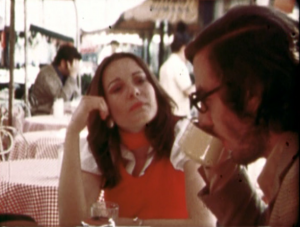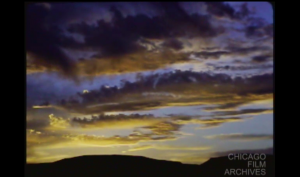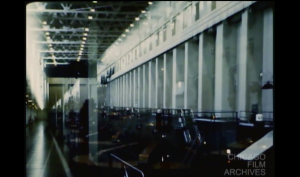
"Making cement for Blue Circle Cement company at the West Medina Cement Works on the Isle of Wight. Footage of the clay fields and chalk quarries, blasting operations, coal and gas retorts, mills, the silos, kiln, clinker being ground into cement, testing for calcium content and crush testing, packing and transport" (EAFA Database).

"Una cinta cargada de referencias a Jean-Luc Godard (Los Carabineros, 1963) pero sobre todo concentrada en la crítica mordaz al radicalismo de izquierda. Una vez más Marco Antonio Madrid hace el papel de protagonista, un joven de pelo largo, pantalón de mezclilla y saco, que se dedica a ligar en los cafés de la Zona Rosa adoctrinando a las mujeres. Lee a Marx después de hacer el amor, y se junta con sus amigos para brindar por "la muerte de la intelectualidad burguesa". Montero utiliza intertítulos como recurso irónico, una suerte de narrador externo que interpela la historia: "¿Qué es la intelectualidad burguesa?". La lucha revolucionaria del joven y sus amigos está teñida de sentido del humor. En una secuencia que recuerda mucho a Los Carabineros, suben al techo de una fábrica para iniciar la lucha armada (...) Por último un cartel proporciona una última burla: "Y si el sol es burgués detendremos al sol" " (Vázquez Mantecón, 2012).
"A film loaded with references to Jean-Luc Godard (The Carabineers, 1963), but above all focused on biting criticism to the radical left. Once again Marco Antonio Madrid plays the role of the lead character, a young man with long hair, jeans and coat, that dedicates his time to hook up in the coffee shops of the Zona Rosa indoctrinating women. He reads Marx after making love and he gets together with his friends to toast for the "death of the bourgeois intellectuality". Montero uses intertitles as a resource for irony, a sort of outside narrator that interpellates the story: "What is bourgeois intellectuality?". The revolutionary fight of the young man and his friends is filled with a sense of humor. In a sequence that reminds us of The Carabineers, they go to the rooftop of a factory to begin the armed fight. (...) Finally a sign shows one last derision "And if the sun is bourgeois, we will stop the sun" " (Vázquez Mantecón, 2012).
"Shows various types of commerce and industry in Victoria, including a large department store, a milk bottling plant, a beauty parlour, offices, garbage collection, a weaver's shop, a bakery, etc." (Duffy, 84).
Other sequences included the Ogden Point grain elevators, Royal Jubilee Hospital, shipyards, a plywood plant, and carpet factory. Nanaimo Daily News, 26 October 1953, p. 5.
This was one of five films Rocker submitted to the American Cinematographer contest of 1937 on the subject of "the service given by some municipal agency of his home city of Cleveland." American Cinematographer, Feb. 1938, 78.
"doc. industriale"
An industrial documentary about Tobacco farming.

"Edited travelogue footage of a trip down the Columbia River. Along with scenic views, industrial processes are documented such as harvesting grain, canning salmon, making plywood and the factory production of sweaters." Chicago Film Archives

"Edited travelogue footage of a trip down the Columbia River. Along with scenic views, industrial processes are documented such as harvesting grain, canning salmon, making plywood and the factory production of sweaters." Chicago Film Archives
"A combination of time lapse cinemicrography and shooting huge factory interiors presented William Schanzenbach, ACL, with the gamut of technical difficulties in the photography of the four reel picture, The Commercial Production of Yeast. The interior shots of huge tanks and other machinery were not only adequately exposed but also were shot from attractive angles without extreme consciousness of camera angles. The laboratory sequences, in which time lapse technique was combined with work at the microscope to show the growth of yeast over a period of time, were well handled. Careful planning and clear titles add to the virtues of this exceptional industrial film." Movie Makers, Dec. 1935, 551.
"The coho and spring salmon trolling industry of Vancouver Island's west coast. Includes footage of boats, types of tackle, catching and cleaning fish, buying stations, delivery to the wharf, etc. The packer Co-Operator II is shown." (BC Archives)
The film was shot between 1941 and 1946.
Additional credit: "Produced by the British Columbia Provincial Fisheries Dept."
Additional credit: "This picture was produced with the kind co-operation of the Kyoquot Trollers Co-operative Association."
Total Pages: 8